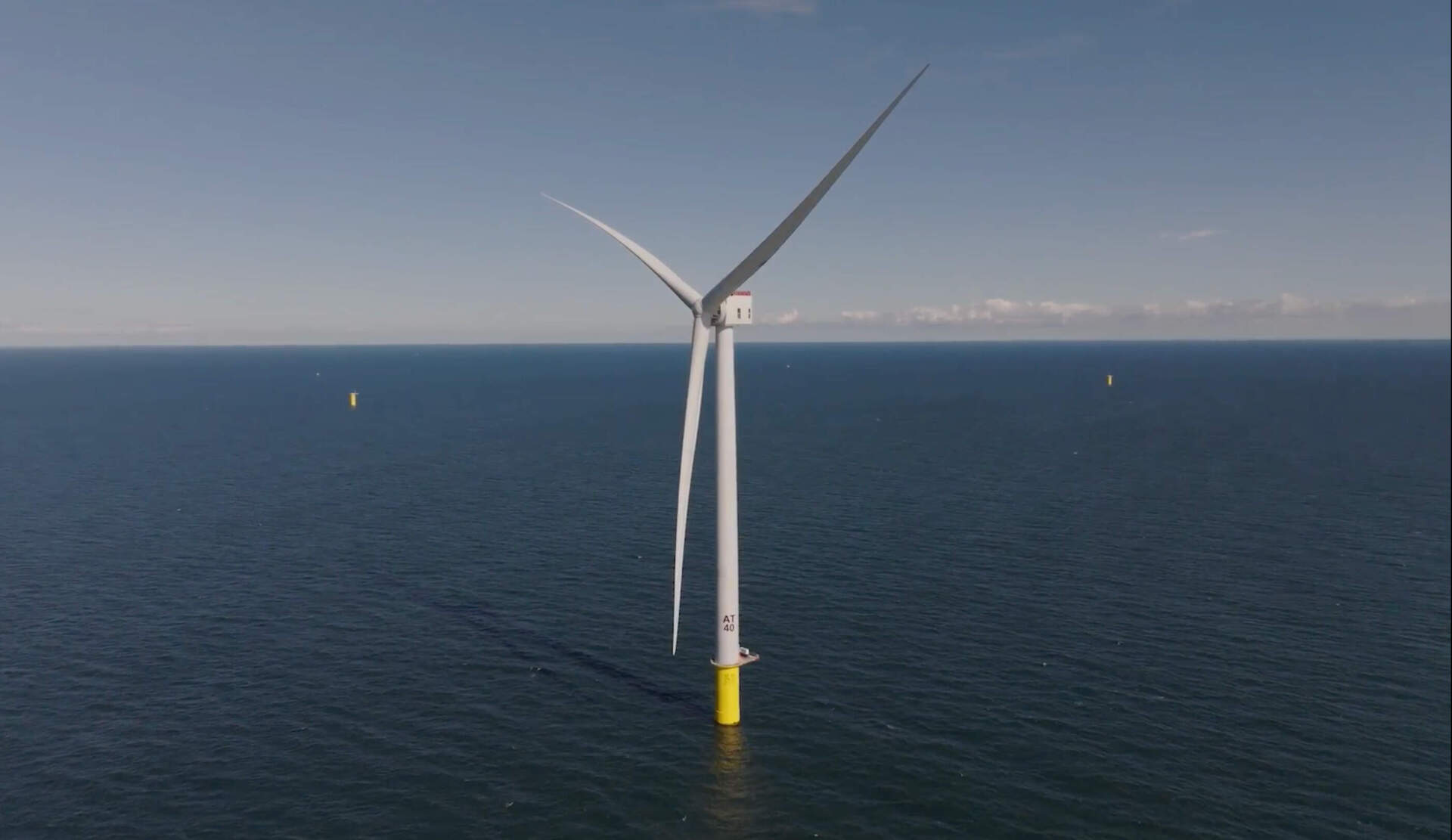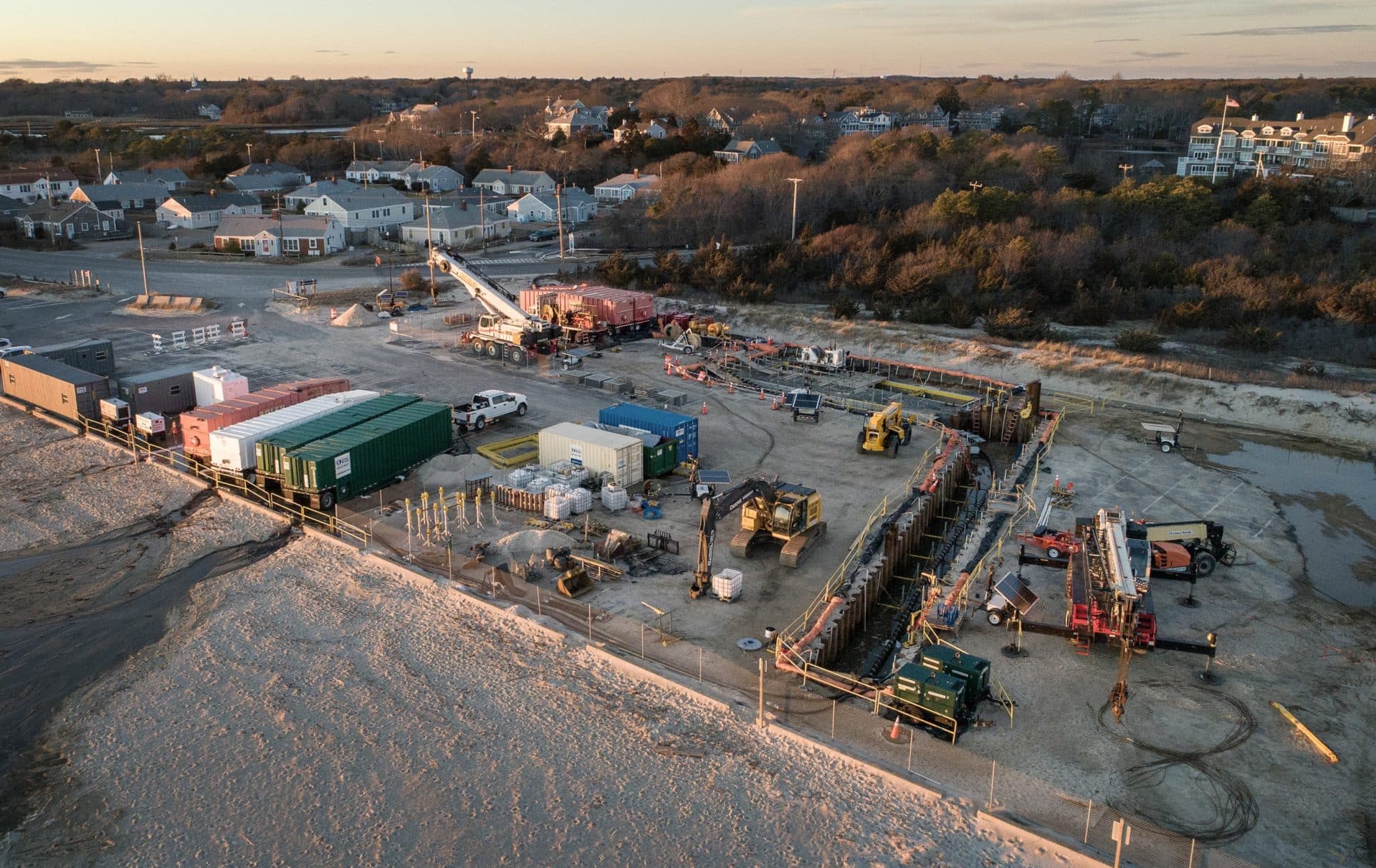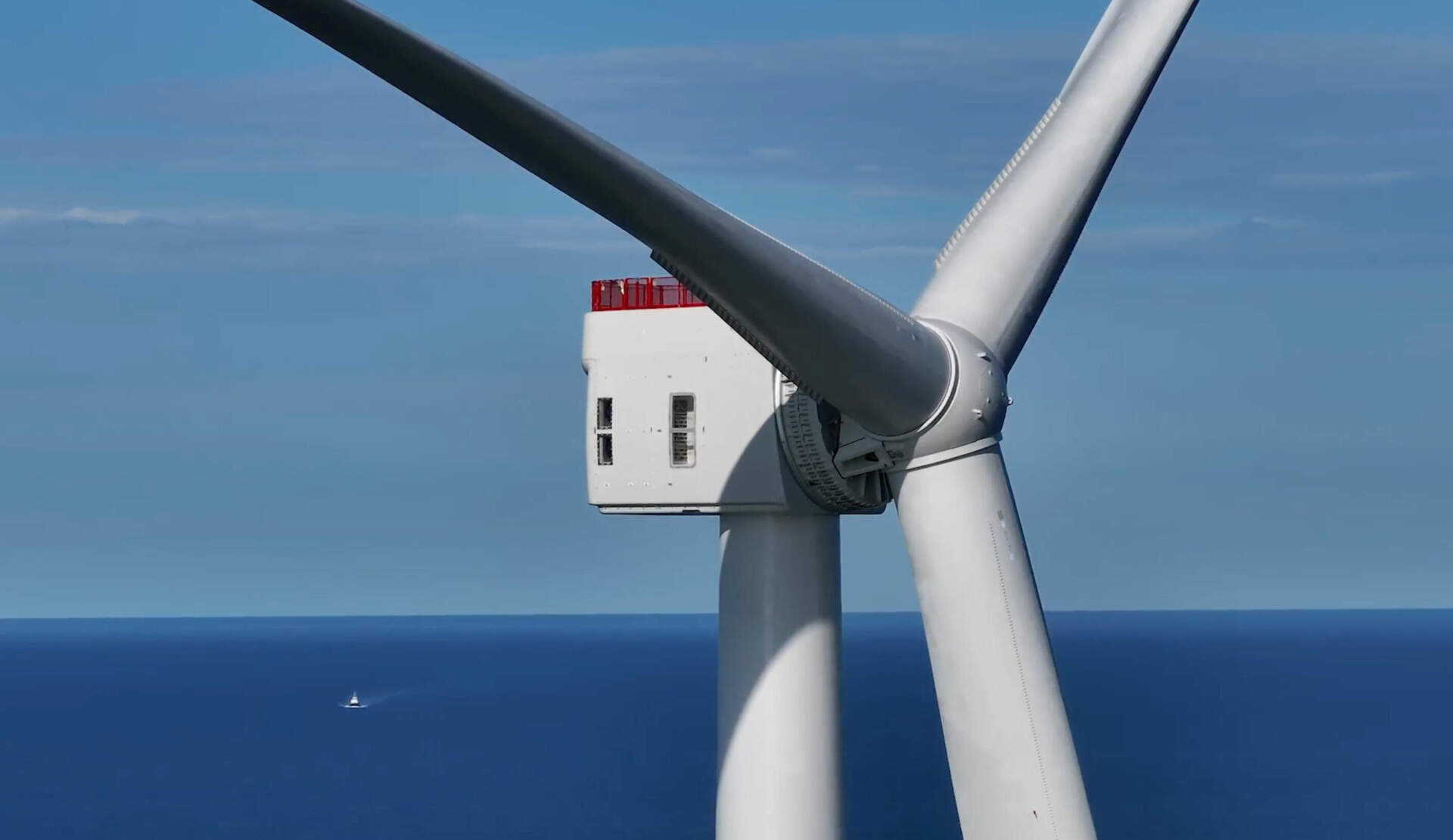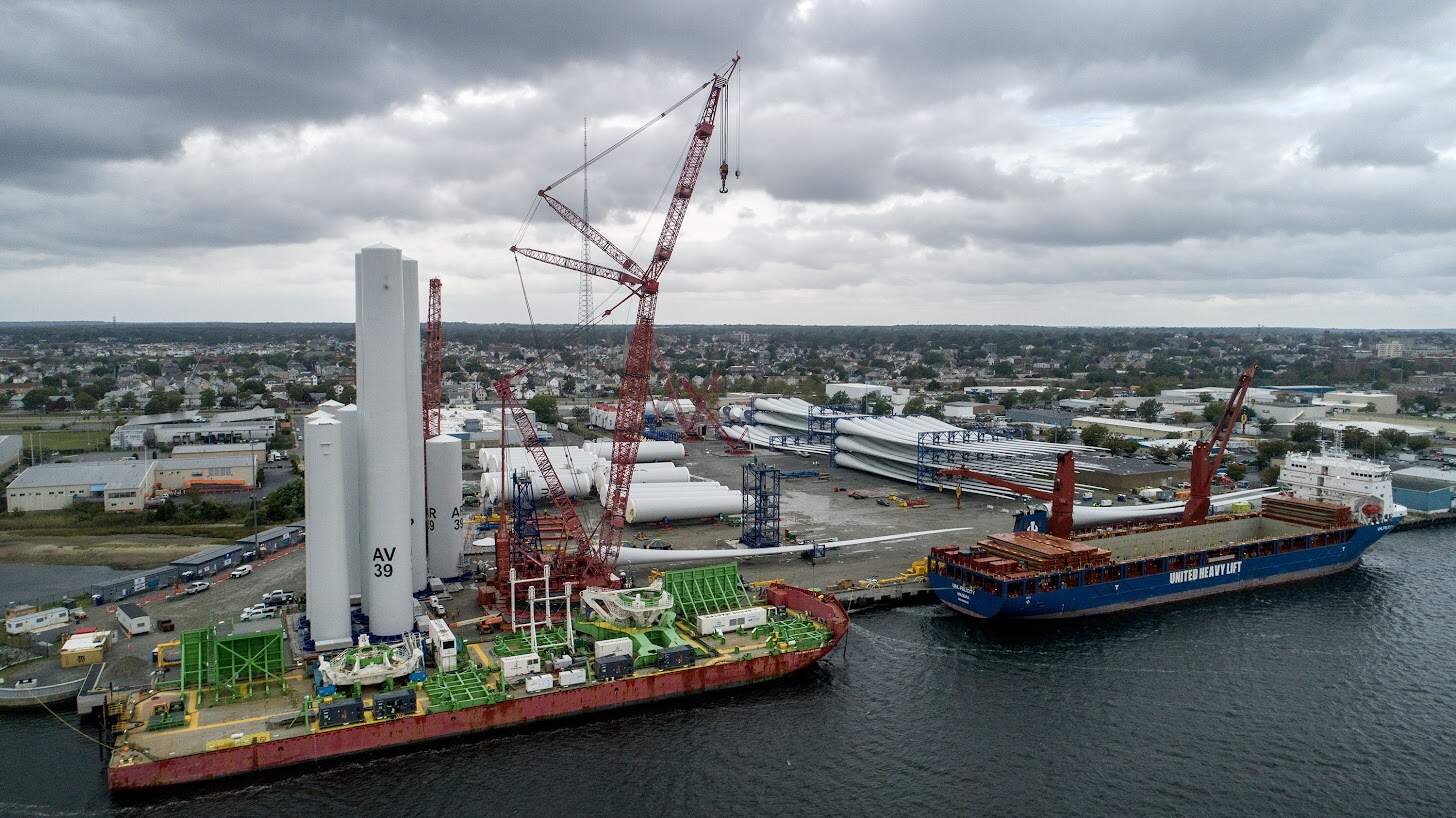Advertisement
Vineyard Wind, country’s first large-scale offshore wind project, is producing clean electricity
Electricity from the country’s first large-scale offshore wind project is officially flowing into Massachusetts and helping to power the New England grid.
The Vineyard Wind project achieved “first power” late Tuesday when one operating turbine near Martha’s Vineyard delivered approximately five megawatts of electricity to the grid. The company said it expects to have five turbines operating at full capacity in early 2024.

The moment marks a major milestone for the project and the country at large, which has long struggled to build offshore wind. It also comes amid great economic turmoil and uncertainty for the industry, making the launch of the utility-scale project all the more significant.
As one industry observer, Amy Boyd Rabin of the Environmental League of Massachusetts, recently put it, getting to the point where big offshore wind projects are generating power on the East Coast “was not inevitable” and should be celebrated “as a very big deal.”
“This truly is a milestone for offshore wind and the entire renewable industry in North America. For the first time we have power flowing to the American consumers from a commercial-scale wind project, which marks the dawn of a new era for American renewables and the green transition,” said Tim Evans of Copenhagen Infrastructure Partners, which is co-developing the project with Avangrid.
Vineyard Wind was supposed to have five turbines sending power to the grid by the end of 2023. Instead, they announced first power with just one turbine fully operational, and a few days late. Project leaders chalked up the delay to a bit of bad weather, some extra precautions and a steep learning curve.
“As the first-in-the-nation project, there's a standard of care we wanted to meet. There was testing. There were issues that had to get resolved,” said Ken Kimmell, chief development officer for Avangrid. Kimmell said it didn't matter if the power started in the 2023 calendar year or a few days later: "The important thing is it happened and we're now on a path to operating this facility.”
Advertisement
The Vineyard Wind 1 project, as it's officially known, is still under construction. Once it’s finished sometime in 2024, it will consist of 62 turbines spaced about a mile apart and rising more than 800 feet out of the water. The project will generate up to 800 megawatts of power, or about enough electricity for 400,000 homes in Massachusetts.
Another smaller project near Long Island, South Fork Wind, also began producing electricity in early December. When that project is complete, its 12 turbines will generate about 132 megawatts of power.

It’s hard to overstate what the commissioning of Vineyard Wind and South Fork Wind represent for the nascent U.S. offshore wind industry. Prior to these projects, the country had a total of seven turbines in the water — five near Rhode Island and two near Virginia. Together, they generate a paltry 42 megawatts, which is far less than the average natural gas power plant.
"We’ve arrived at a watershed moment for climate action in the U.S., and a dawn for the American offshore wind industry," wrote Avangrid CEO Pedro Azagra. "2023 was a historic year defined by steel in the water and people at work. Today, we begin a new chapter and welcome 2024 by delivering the first clean offshore wind power to the grid in Massachusetts."
Still, even with the addition of Vineyard Wind and South Fork Wind, the country has a long way to go to reach President Joe Biden’s goal of getting 30,000 megawatts of offshore wind power flowing into the grid by 2030. Meeting this target, the administration says, will provide clean electricity for 10 million homes, avoid 78 million metric tons of planet-warming emissions and create thousands of jobs.
So far, states on the East Coast have led the effort to build a U.S. offshore wind industry in order to meet their own clean energy and climate goals. But while they have collectively committed to procuring more than 30,000 megawatts of wind power — with the largest promises coming from New Jersey (11,000 megawatts), New York (9,000 megawatts) and Massachusetts (5,600 megawatts) — the amount of power actually in the permitting or construction pipeline is much smaller. And over the last few months, global economic problems have caused several developers to back out of project contracts or cancel projects all together.
“No one has said that building up this industry was going to be easy. And it turns out that it's not,” Rebecca Tepper, Massachusetts’ top energy official, said at a recent conference about offshore wind. “Despite the challenges that we face, we are confident that we will have a vibrant offshore wind industry off the coast of Massachusetts … And today, we see the promise of that industry in the Vineyard Wind Project.”
Massachusetts, in partnership with Rhode Island and Connecticut, is currently seeking bids for another 3,600 megawatts of offshore wind power. Tepper said that Vineyard Wind’s launch should boost confidence in the region’s commitment to offshore wind, and perhaps prompt “some really good bids at the end of the month."

Vineyard Wind may be Massachusetts’ first operating offshore wind project, but it’s not the state’s first attempt to build one. In the early 2000s, a company called Cape Wind proposed building a 450 megawatt wind farm about five miles south of Cape Cod. Almost immediately, the project faced public opposition, including from notable politicians like the late U.S. Sen. Ted Kennedy and former Massachusetts Gov. Mitt Romney. While many worried the project would harm the sensitive Nantucket Sound ecosystem, others simply didn’t want to see the turbines from the beach.
As the Cape Wind project stalled, and eventually fizzled, so too did talk of a big offshore wind industry in Massachusetts and the country.
“I remember talking to developers after Cape Wind and thinking about whether this industry would ever get off the ground,” Tepper said. “Well, this project — [Vineyard Wind] — is proof that it’s off the ground and in the water.”
That’s not to say things have always been smooth sailing for Vineyard Wind.
After winning Massachusetts’ first round of offshore wind project bids in 2018, Vineyard Wind — a joint venture between Avangrid Renewables and Copenhagen Infrastructure Partners — entered the long, and at times bumpy, federal permitting process.
The review was supposed to take two years, but in 2019, the Trump administration, which was hostile toward offshore wind, unexpectedly hit the pause button. The delay cost millions, threatened to upend the project’s tight timeline, and once again, raised questions about whether the U.S. could actually build a robust offshore wind industry.
Around the same time, fishermen along the East Coast began to more strongly oppose offshore wind development. Many worried that the turbines would alter the ocean ecosystem and threaten their already-tenuous industry.
While Vineyard Wind has said it has listened to the fishing industry’s concerns — and even modified the project to better accommodate fishing boats — not everyone is satisfied. To date, there are two lawsuits from fishing groups about Vineyard Wind currently winding their way through the federal court system. One of the groups is funded by the Texas Public Policy Foundation, a conservative think tank with strong ties to the fossil fuel industry.

With the election of Biden in 2020, things began looking up for Vineyard Wind and the dozen or so other proposed projects in the Northeast and mid-Atlantic regions. The administration resumed Vineyard Wind’s permitting process shortly after taking office, and committed to the 2030 goal of 30,000 megawatts.
In May 2021, Vineyard Wind 1 became the first U.S. project to get full federal approval. A few months later, the project secured financing and began onshore construction. Offshore construction, including the laborious process of laying miles of subsea electrical cables from the project site to Covell’s Beach on Cape Cod, began in 2022. The work to install the remaining 57 turbines will continue into 2024.
"This is a historic moment for the American offshore wind industry,” wrote Gov. Maura Healey. “This is clean, affordable energy made possible by the many advocates, public servants, union workers, and business leaders who worked for decades to accomplish this achievement. As we look ahead, Massachusetts is on a path toward energy independence thanks to our nation-leading work to stand up the offshore wind industry."
